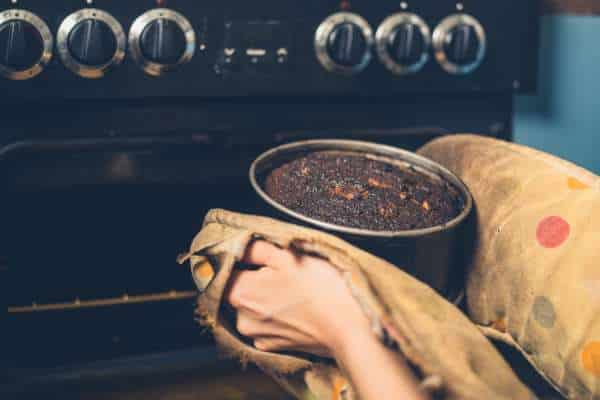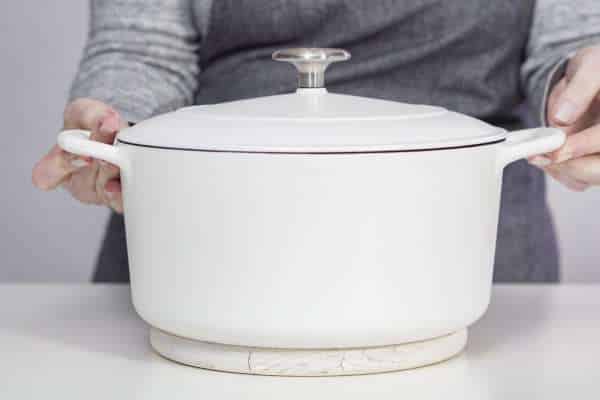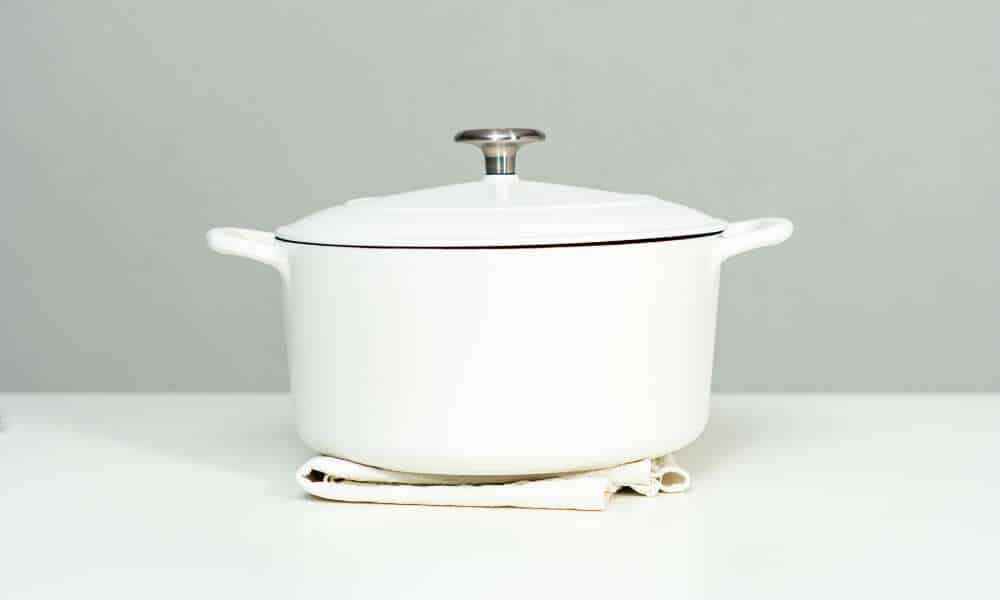Keeping your Dutch oven in pristine condition not only enhances its functionality but also extends its lifespan, making it a worthwhile investment for any cook. In this guide on “How to Clean a Dutch Oven,” we’ll explore a variety of methods to maintain its condition, from daily cleaning tips to tackling tough stains and re-seasoning techniques. Whether you’re a seasoned chef or a home cooking enthusiast, these simple and effective strategies will help you keep your Dutch oven in top shape, ensuring it continues to produce delicious meals for years to come. Get ready to transform your approach to cookware care with these expert tips.
Essential Tools and Materials Needed for Cleaning

To effectively clean a Dutch oven, you’ll need some essential tools and materials. Start with a soft sponge or brush to avoid scratching the surface. Mild dish soap helps remove grease without damaging the seasoning. For tougher jobs, coarse salt can serve as a gentle abrasive. It’s also useful to have white vinegar on hand for natural disinfection and removing any lingering odors. Ensure you have soft cloths or paper towels for drying and buffing the oven after washing. Equipping yourself with these basic items will simplify the cleaning process and help maintain the quality of your cookware over time.
Daily Cleaning Techniques for Your Dutch Oven
Maintaining your Dutch oven doesn’t have to be a chore. After each use, let the cookware cool, then wash it with warm water and a soft sponge. Avoid using harsh detergents or metal scourers, as they can damage the seasoning of your oven. For best results, dry it thoroughly with a soft cloth or paper towel right after washing to prevent rust. This routine care keeps your Dutch oven ready for its next culinary adventure, ensuring each dish is as flavorful as the last. Stick to these simple steps, and your cookware will remain in excellent condition, ready for whatever recipe comes your way.
How to Remove Stuck-On Food from Your Dutch Oven

Removing stuck-on food from your Dutch oven can seem daunting, but with the right approach, it becomes a straightforward task. Start by filling the pot with water and adding a few drops of dish soap. Bring this mixture to a simmer on your stove, allowing the heat to loosen the residue. After about 10 minutes, turn off the heat and let the pot cool slightly. Use a wooden spoon or a plastic scraper—never metal, to avoid scratching—to gently remove the softened food. Rinse thoroughly with warm water, and your Dutch oven is ready for its next culinary adventure, free from any stubborn leftovers.
Deep Cleaning Process for Tough Stains
For tough stains that resist regular cleaning, a deep cleaning session for your Dutch oven might be necessary. Start by filling it with water and adding a few tablespoons of baking soda. Bring the mixture to a boil and let it simmer for about 15 minutes. This process helps lift stubborn stains and food residue. After the water cools, use a non-abrasive sponge to gently scrub the interior. For any remaining spots, a paste of baking soda and water applied directly to the area can be effective. Rinse thoroughly with warm water and dry completely to prevent rusting, ensuring your Dutch oven is spotless and ready for its next use.
Seasoning Your Dutch Oven: A Step-by-Step Guide
Seasoning your Dutch oven is essential to prevent rust and create a non-stick surface. Start by washing it with warm, soapy water and drying it thoroughly. Next, apply a thin layer of cooking oil to the entire surface, including the lid. Place the oven upside down in a preheated 375°F oven for one hour to let the oil polymerize. After heating, allow it to cool in the oven. This process not only enhances your Dutch oven’s durability but also improves its cooking performance. Repeat this seasoning regularly to maintain its optimal condition and ensure your meals come out perfectly every time.
The Dos and Don’ts of Dutch Oven Maintenance
Maintaining your Dutch oven requires a balance of proper cleaning and careful handling. Always avoid using metal utensils, which can scratch and damage the surface. Instead, opt for wooden or silicone spoons and spatulas. It’s crucial to avoid rapid temperature changes; let your Dutch oven cool naturally before washing to prevent thermal shock. While gentle detergents are safe for occasional deep cleaning, frequent use can strip the seasoning from cast iron models. To preserve its functionality, dry your Dutch oven thoroughly after each wash and apply a light coat of oil to protect the surface. By following these tips, you’ll ensure your Dutch oven remains a reliable kitchen companion.
Natural Cleaning Solutions for Dutch Ovens

For an eco-friendly approach to maintaining your Dutch oven, natural cleaning solutions can be remarkably effective. Baking soda and vinegar, for instance, work wonders in removing stubborn stains and odors without the harshness of chemicals. Simply create a paste of baking soda with water, apply it to the affected areas, and let it sit before scrubbing gently. For a deeper clean, add vinegar to the mix, which will react with the baking soda to lift grime effortlessly. This method not only preserves the integrity of your cookware but also ensures a safe, toxin-free environment in your kitchen.
How to Store Your Dutch Oven to Prevent Damage
Proper storage of your Dutch oven is crucial to prevent damage and preserve its quality. Start by ensuring the oven is completely dry to avoid rust formation. If you’re stacking it with other cookware, place a layer of paper towel or a soft cloth between them to prevent scratches. For those who use their Dutch oven infrequently, consider storing it in a cool, dry place with the lid slightly ajar to promote air circulation, preventing odor buildup and moisture accumulation. By following these simple steps, you can keep your Dutch oven in excellent condition, ready for your next culinary adventure.
Troubleshooting Common Dutch Oven Cleaning Issues
Encountering issues while cleaning your Dutch oven can be frustrating. Common problems include persistent stains, rust formation, and food remnants that refuse to budge. To tackle these challenges effectively, start by soaking the pot in warm water with baking soda to loosen debris. For rust, a paste made of equal parts salt and vinegar applied directly to the spots can work wonders. Always ensure to dry the oven thoroughly after cleaning to prevent rust. By addressing these common cleaning issues with targeted solutions, you can maintain your Dutch oven’s integrity and keep it ready for your next culinary adventure.
Professional Tips for Keeping Your Dutch Oven Like New

To ensure your Dutch oven remains in like-new condition, regular maintenance is crucial. After each use, allow it to cool completely before cleaning with warm water and a soft sponge to avoid thermal shock. Avoid using harsh detergents or metal scouring pads, as these can damage the enamel or seasoning. For stubborn stains, simmer some water with a few tablespoons of baking soda. Dry your Dutch oven thoroughly after washing to prevent rust, and apply a light coat of oil to the interior to protect the seasoning. With these professional tips, your Dutch oven will continue to be a reliable companion in your culinary adventures.
Conclusion
Maintaining the pristine condition of your Dutch oven is not just about cleanliness; it’s about preserving its quality and enhancing your cooking experience. By following the guidelines we’ve discussed on how to clean a Dutch oven, you can ensure your cookware performs optimally for many years. Remember, regular care, proper cleaning techniques, and appropriate storage are key to keeping your Dutch oven in top shape. Embrace these practices to enjoy the lasting benefits of your versatile kitchen essential. Whether you’re simmering stews or baking bread, a well-maintained Dutch oven is the secret to achieving delicious results every time.

